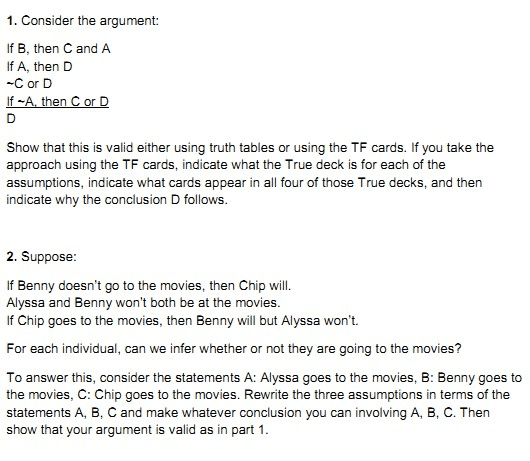MODR 2640 Lecture Notes - November 3, Truth Table, Logical Equivalence
Document Summary
The conditional when antecedent is the conjunction of the premises and whose consequent is the conclusion (a b) c. Argument is valid iff corresponding conditional is a tautology. A set of statements is consistent if it is possible that all are true. Valid = impossible for all premises to be true and conclusion false. Then impossible p1 true, p2 true, and c false. So, set p1, p2, and ~c is inconsistent. Argument valid iff set consisting of all premises and negation of conclusion is inconsistent. Valid = impossible all premises true and conclusion false. Inconsistent = impossible that all premises are true. Any argument with a tautology as a conclusion is valid. To determine whether an argument is a tautology, contradiction, or contingent statement. Two statements always have same truth value-- then equivalent. If there is no row in which all premises true and conclusion false, then valid. If a row in which all statements are true, then consistent.



